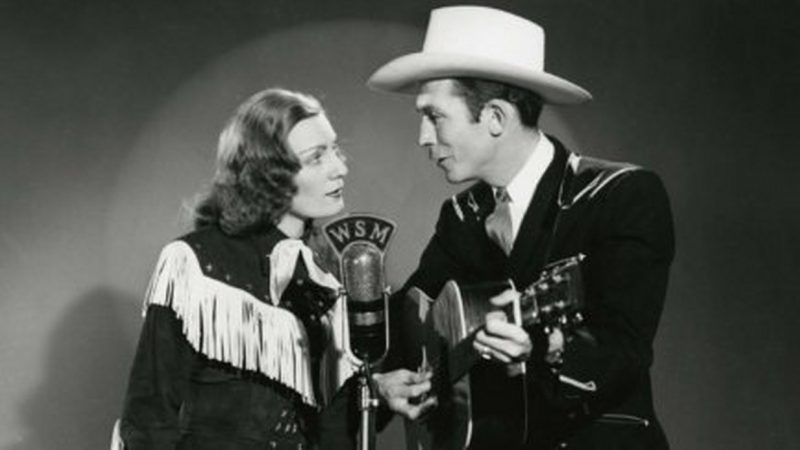Ken Burns Delves into the Hardscrabble History of Country Music
You don’t have to enjoy the genre to find this 16-hour PBS docuseries fascinating.

Country Music. PBS. Sunday, September 15, 8 p.m.
PBS documentarian Ken Burns isn't necessarily modern America's most accurate historian or the most analytically insightful. He is unquestionably, however, the most irresistible storyteller. Whether the subject is Vietnam or Prohibition, Burns fishes out the most captivating characters and their tales, then follows them down twisting paths that defy signposts, yet always pay off.
Country Music, the new 16-hour documentary from Burns and his filmmaking partner Lynn Novick, may be the best example yet of their artful narrative skills. You don't have to like country music at all—in fact, you can despise it—to be swept away by these gloriously eccentric yarns.
A case in point is Sunday night's opening episode, on the hillbilly madmen and hardscrabble church ladies of the early 20th century who stirred the pot of American musical traditions to produce the earliest glimmerings of what would become country music.
There's Atlanta's Fiddlin' John Carson, the first real country star. His frisky bluegrass tunes got him invited as the featured entertainment at rallies of both the Ku Klux Klan and the Communist Party. And there's DeFord Bailey, the Nashville shoe shiner who could make his harmonica sound like anything from a train whistle to a bagpipe. When Bailey shouted "Sic 'em!" at the opening of his signature number, "The Fox Chase," radio listeners wrote in to tell him it made their dogs go nuts.
The business side of country music produced its own crop of oddballs, none more so than Dr. John Brinkley, who accidentally created a national audience for country artists. An ambitious, inventive and slightly nutty (that last being a joke you'll get in a minute) Kansas surgeon who came up with the Viagra of his day—transplanting goat testicles into men.
To advertise his specialty, Brinkley opened one of the first high-powered border-blaster radio stations, the 500,000-watt XER, which could be heard throughout most of North America from its studios just across the Rio Grande in Villa Acuña, Mexico. And when Brinkley realized he needed some entertainment between his testicular sales pitches—voila!—country-music radio was born.
Country Music, though, is not just a catalog of tuneful populist screwballs but a serious history of an American musical movement. Burns and Novick deftly trace country's origins through a stew—"this beautiful sort of boiling American music pot," as one singer puts it—of mordant ballads carried across from the British Isles, church hymns, vaquero campfire songs, German oompah and African music played on stringed gourds, the ancestor of the American banjo. Some of the most insightful bits of the show are interviews with country artists like Dolly Parton and Carlene Carter, who often break into bits of song to illustrate musical origins and innovations.
For some of these artists, the history in Country Music is more like family gossip. Carter is a third-generation descendent of the Carter Family, a penniless trio of farmers who in 1927 showed up at an open audition at a recording studio in Bristol, Tennessee.
A.P. Carter, his wife, Sarah, and his sister-in-law, Maybelle—on loan from her husband, whose cornfield A.P. had promised to hoe in return for her absence—were lured by the promise of a munificent $50 a song for anything they could persuade the studio to record.
The Carters recorded half a dozen numbers, most of them mountain traditionals they'd been singing around the kitchen table for years. When released, the songs—including the dismal matrimonial ballad "Single Girl, Married Girl"—had a collective impact that's been labeled the Big Bang of Country Music. But the Carters couldn't wait around to see what happened. They had to head home; A.P. had a cornfield to hoe. It's almost as if he were scripting his story for Ken Burns.
Show Comments (71)